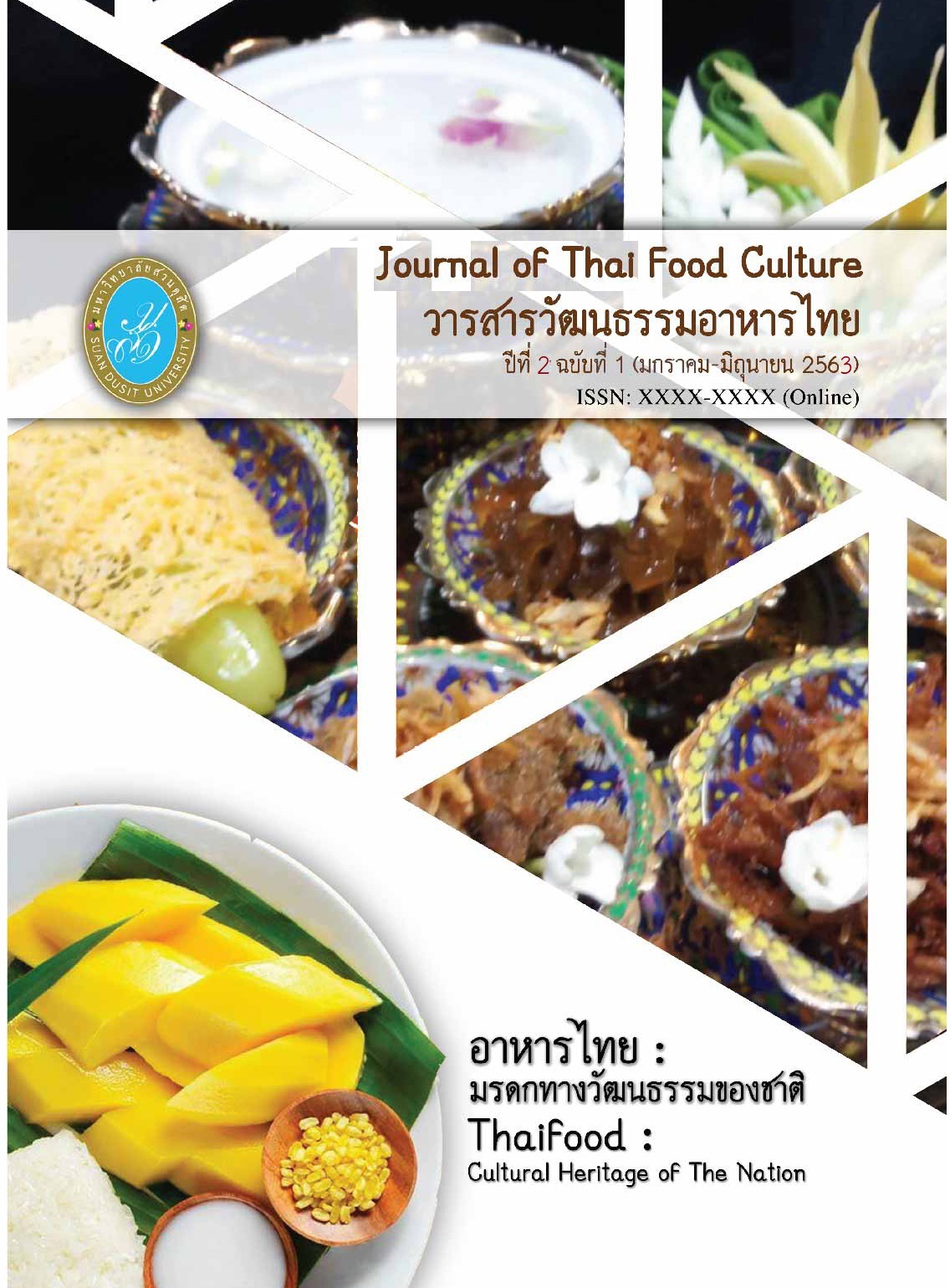The Development of Sesame Chili Paste
Abstract
The objective of this study was to develop Sesame Chili Paste by using 100 % white or black sesame as substitution of meat. Three kind of Thai chili paste was chosen to studied are red hot chili paste (Nam prík ta daeng) , roasted chili paste (Nam prik pao) and hell chili paste (Nam prík narok), which made from red tilapia. These chili pastes were substituted by white or black sesame in a standardized recipe. The measuring of food acceptability was evaluated by using the9-point hedonic scale including appearance, color, odor, taste, texture and overall acceptance. The result showed that the consumer overall were acceptability of red hot chili paste, roasted chili paste and hell chili paste, which were using white sesame (6.97, 7.27 and 6.71, respectively). These chili pastes were tested by using the just about right scale (colure, smell, taste, sweetness, salty, sour, and spicy) from consumer. It found that score was more than 70 %. Then, three chili pastes were substituted by 100 % white sesame testing acceptability. The results showed that roasted chili paste (Nam prik pao) was acceptable (8.01). The result also showed that 88 % of consumers would buy sesame chili paste. The nutrition values of sesame chili pastes (carbohydrate, oil, protein, calcium, iron, thiamin, riboflavin and vitamin C) were higher than standard chili paste.
Downloads
Published
How to Cite
Issue
Section
License
Copyright (c) 2020 Suan Dusit School of Culinary Arts

This work is licensed under a Creative Commons Attribution-NonCommercial-NoDerivatives 4.0 International License.
ลิขสิทธิ์ต้นฉบับที่ได้รับการตีพิมพ์ในวารสารวัฒนธรรมอาหารไทย ถือเป็นกรรมสิทธิ์ของโรงเรียนการเรือน มหาวิทยาลัยสวนดุสิต ห้ามผู้ใดนำข้อความทั้งหมดหรือบางส่วนไปพิมพ์ซ้ำ เว้นแต่จะได้รับอนุญาตอย่างเป็นลายลักษณ์อักษรจากโรงเรียนการเรือน มหาวิทยาลัยสวนดุสิต นอกจากนี้ เนื้อหาที่ปรากฎในบทความเป็นความรับผิดชอบของผู้เขียน ทั้งนี้ไม่รวมความผิดพลาดอันเกิดจากเทคนิคการพิมพ์


